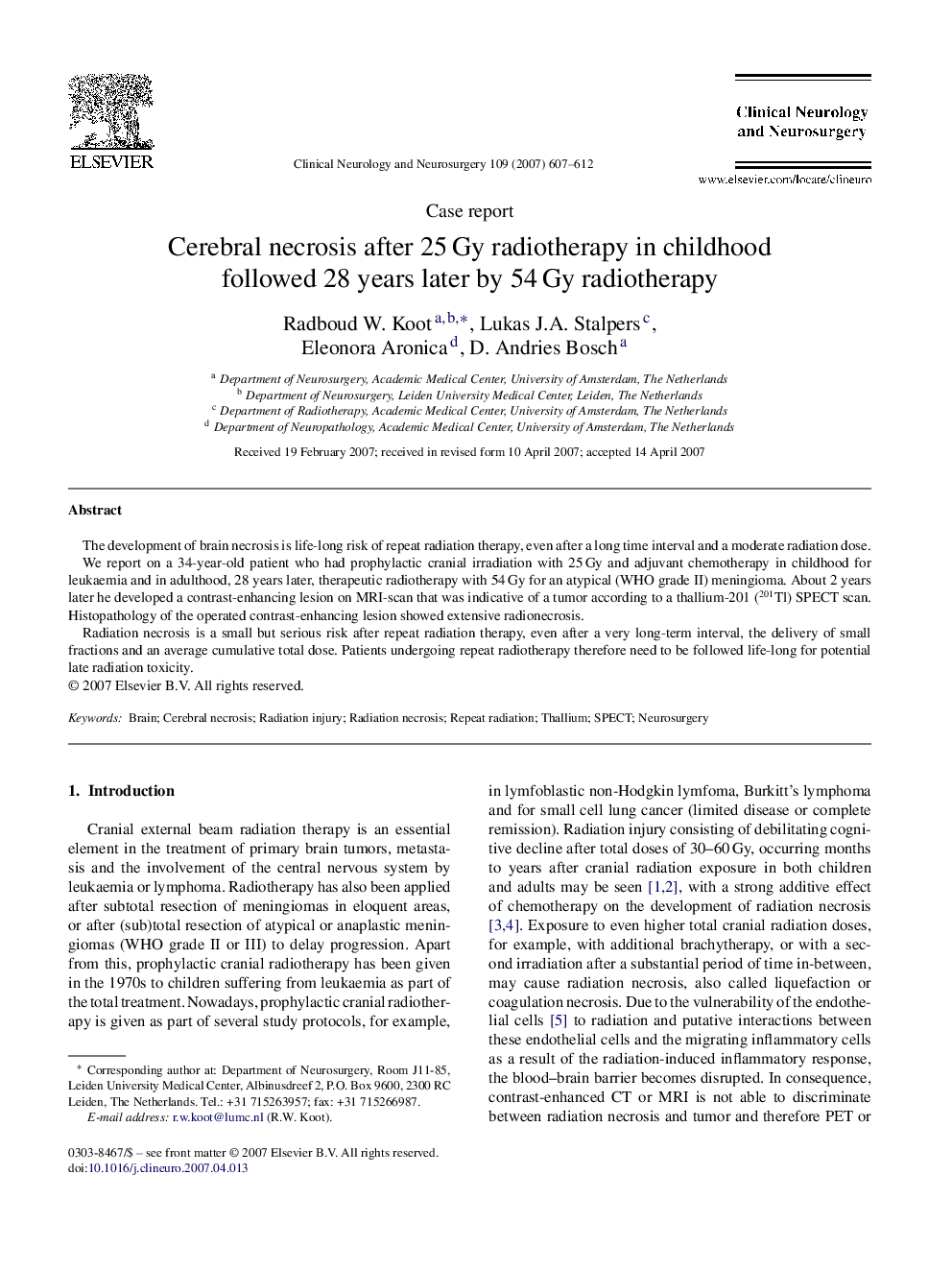| Article ID | Journal | Published Year | Pages | File Type |
|---|---|---|---|---|
| 3041938 | Clinical Neurology and Neurosurgery | 2007 | 6 Pages |
The development of brain necrosis is life-long risk of repeat radiation therapy, even after a long time interval and a moderate radiation dose.We report on a 34-year-old patient who had prophylactic cranial irradiation with 25 Gy and adjuvant chemotherapy in childhood for leukaemia and in adulthood, 28 years later, therapeutic radiotherapy with 54 Gy for an atypical (WHO grade II) meningioma. About 2 years later he developed a contrast-enhancing lesion on MRI-scan that was indicative of a tumor according to a thallium-201 (201Tl) SPECT scan. Histopathology of the operated contrast-enhancing lesion showed extensive radionecrosis.Radiation necrosis is a small but serious risk after repeat radiation therapy, even after a very long-term interval, the delivery of small fractions and an average cumulative total dose. Patients undergoing repeat radiotherapy therefore need to be followed life-long for potential late radiation toxicity.
